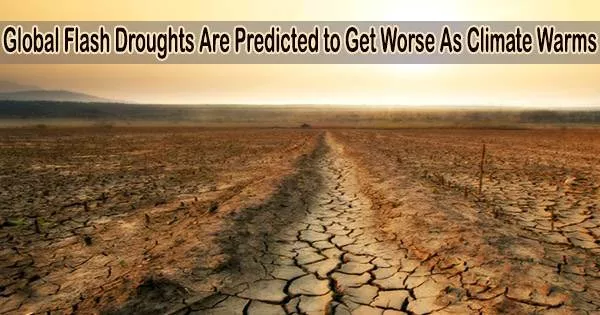Flash droughts, which arise suddenly and quickly, can have a devastating effect on ecological and agricultural systems with far-reaching repercussions. Researchers at the University of Oklahoma are analyzing how the risk to croplands around the world and the frequency of flash droughts will change as a result of climate change.
Jordan Christian, a postdoctoral researcher, is the lead author of the study, “Global projections of flash drought show increased risk in a warming climate,” published today in Nature Communications Earth and Environment.
“In this study, projected changes in flash drought frequency and cropland risk from flash drought are quantified using global climate model simulations,” Christian said. “We find that flash drought occurrence is expected to increase globally among all scenarios, with the sharpest increases seen in scenarios with higher radiative forcing and greater fossil fuel usage.”
The imbalance of radiation where more radiation enters Earth’s atmosphere than it does is known as “radiative forcing.” These practices, together with the combustion of fossil fuels, are among the biggest causes of global warming. Storms, flash flooding, flash droughts, and other severe weather occurrences are anticipated to increase due to the changing climate.
This study continues to emphasize that agricultural producers, both domestic and abroad, will face increasing risks associated with water availability due to the rapid development of drought. As a result, socioeconomic pressures associated with food production, including higher prices and social unrest, will also increase when crop losses occur due to flash drought.
Professor Jeffrey Basara
“Flash drought risk over cropland is expected to increase globally, with the largest increases projected across North America and Europe,” Christian said.
“CMIP6 models projected a 1.5 times increase in the annual risk of flash droughts over croplands across North America by 2100, from the 2015 baseline of a 32% yearly risk in 2015 to 49% in 2100, while Europe is expected to have the largest increase in the most extreme emissions scenario (32% to 53%), a 1.7 times increase in annual risk,” he said.
Jeffrey Basara, an associate professor in the School of Meteorology in the College of Atmospheric and Geographic Sciences and the School of Civil Engineering and Environmental Sciences in the Gallogly College of Engineering, is Christian’s faculty advisor and study co-author.
Basara is the executive associate director of the hydrology and water security program and leads OU’s Climate, Hydrology, Ecosystems, and Weather research group.
Since 2017, the researchers have been looking into techniques to better identify and predict flash droughts, and several of their papers have been published in the Journal of Hydrometeorology, Environmental Research Letters, and Nature Communications.
“This study continues to emphasize that agricultural producers, both domestic and abroad, will face increasing risks associated with water availability due to the rapid development of drought. As a result, socioeconomic pressures associated with food production, including higher prices and social unrest, will also increase when crop losses occur due to flash drought,” Basara said.





